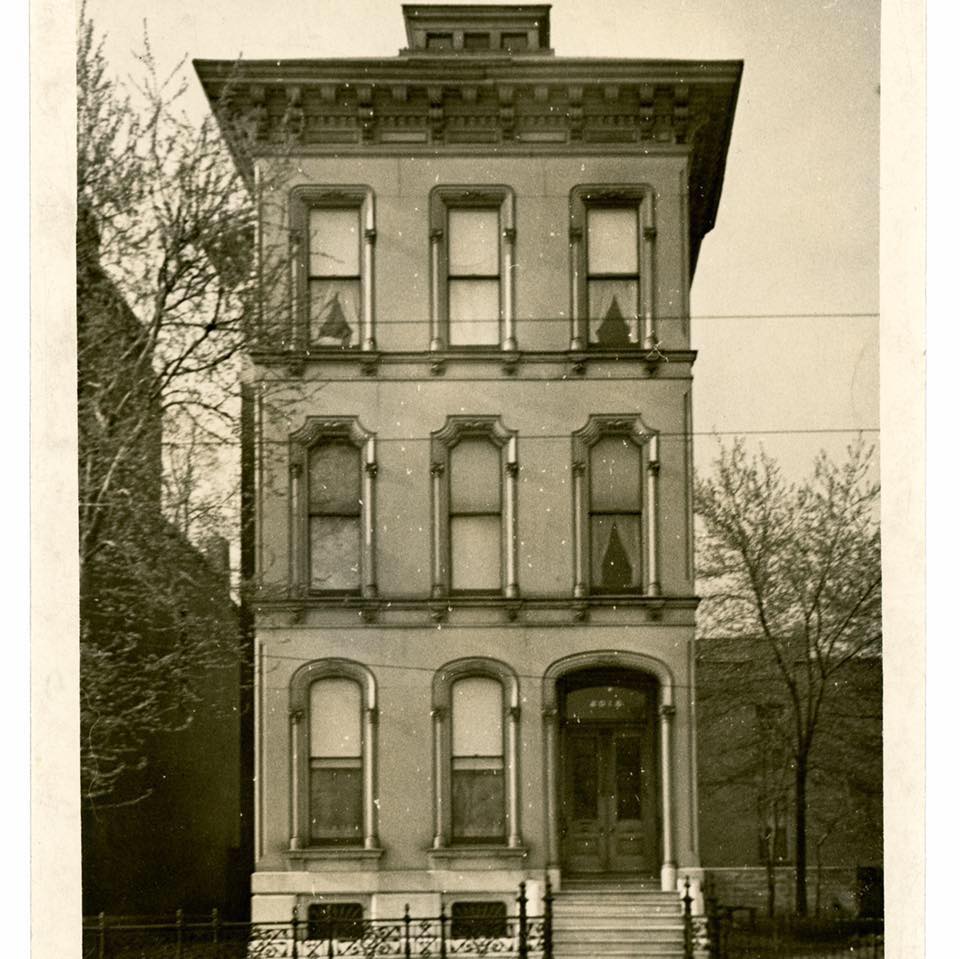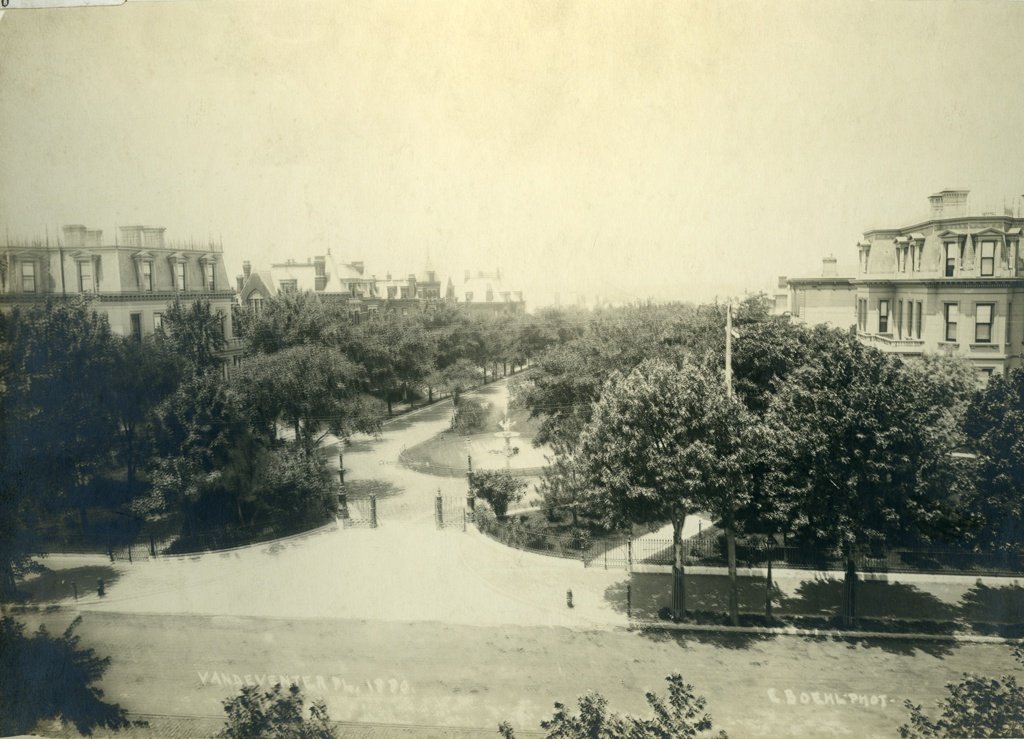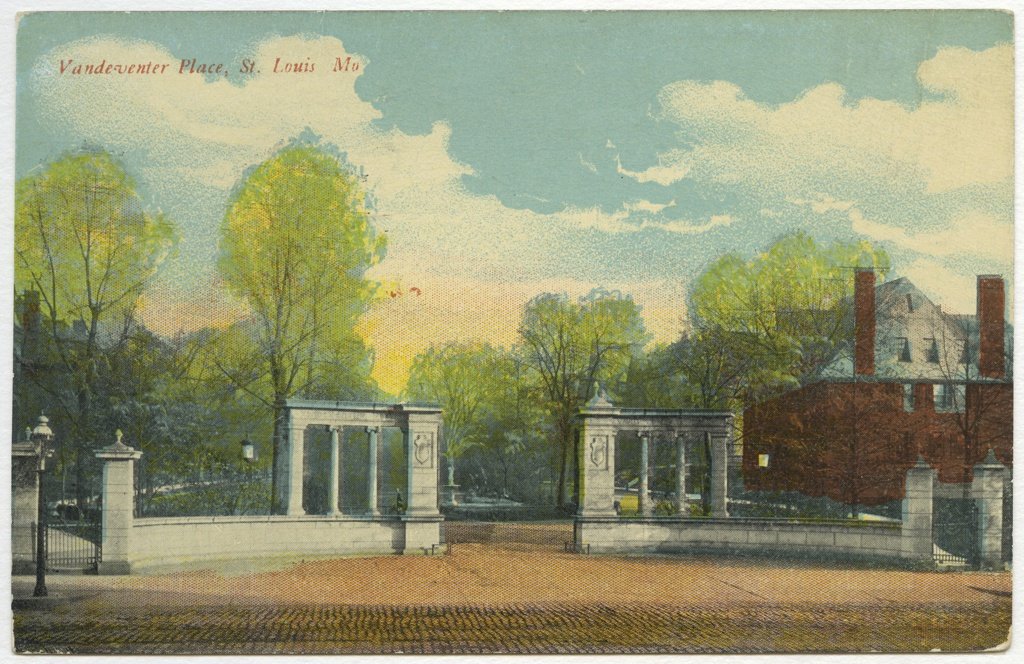Laid out in 1870, Vandeventer Place became the prime location for the wealthiest St. Louisans to build their mansions. Vandeventer Place was not the first private street in St. Louis, but it was the most prestigious of them all in the late 19th century. Before the Civil War, Lucas Place, which was laid out in 1851, became the first private street in the city. It was the first attempt by wealthy St. Louisans to build a community at the edge of the city’s developed area to escape the industry and disease which were commonly associated with city living, especially in the years following the 1849 cholera epidemic. By the end of the Civil War in 1865, numerous large mansions had been built on Lucas Place, which was still being built on until 1876. At the time of the 1875 Compton and Dry map publication, Vandeventer Place was located in a remote part of the city, and only had two mansions built, while Lucas Place had been fully developed, and was still the most prestigious place to live in St. Louis. However, as industry began to encroach on Lucas Place, and its 30 year deed restrictions began to expire, Vandeventer Place surpassed it as wealthy St. Louisans began to move further west to the Midtown neighborhood.
Vandeventer Place was a private street which was developed with the funding from wealthy businessmen, Napoleon Mulliken, Charles H. Peck, and John Mc Cune, who served as three of the neighborhood’s trustees. They bought the land from the estate of Peter L. Vandeventer, who was a prominent landowner in the area and had died in 1863. Peck and Mulliken bought lots across the street from each other and built the first houses on the new private street in 1871. To design the street’s layout, they hired Julius Pitzman, who became known as one of the most influential surveyors and private street designers in St. Louis history. A signature feature of Pitzman’s private street designs were the curvilinear streets and wide grassy boulevards that went down the middle of the street. Each side of the street was lined with lavish mansions and grand yards. Vandeventer Place also had fountains placed at the ends of the boulevard. While many mansions at the time were built on the main thoroughfares, the mansions of Vandeventer Place were secluded on a gated street, which was only accessible to the residents and their guests. The large gates which can be seen in Forest Park today were built on each end of Vandeventer Place in 1894.
Private streets allowed residents to control who could live on the street and what could be built , at a time when zoning laws and neighborhood associations were basically nonexistent. Deed restrictions placed on the lots required buildings to have a setback and a minimum cost of construction and size of the house. Residents all paid into a neighborhood association who privately maintained the infrastructure on the street, independently from the city. Many of the features of private streets laid the foundations for later suburban developments, such as homeowners associations, cul de sacs, and gated communities. While Vandeventer Place no longer exists, St. Louis has several other private streets which still remain today.
Vandeventer Place was home to various captains of industry and wealthy landowners in the city of St. Louis. They hired some of the most prominent architects in the country and built mansions in popular architectural styles of the time. This video will feature some of the most notable mansions on the street.
By the late 1890s, Vandeventer Place began to decline, with the last mansion constructed on the street in 1898. Mansions in the Central West End became more desirable than Midtown, which began to face the same issues as Lucas Place before it. The industries and crowded conditions of downtown began to reach the midtown area, and the wealthiest residents of Vandeventer Place began to start moving to Portland and Westmoreland Places in the early 1900s and 1910s. At first, the extremely wealthy captains of industry began to be replaced by less prominent, although still wealthy individuals, like doctors and lawyers. They maintained the exclusivity of the street through the first two decades of the 20th century, as some of the wealthiest residents were still living there at this time, and fought hard to maintain the prestige of the street. However, by the 1920s, the surrounding area in Midtown along Grand Avenue became home to the theater district which drew thousands of St. Louisans to the area via streetcars and automobiles, which brought noise and smoke to the area, and further pushed many of the wealthy residents west. The area really began to decline after the Great Depression, as property values diminished while the mansions remained expensive to maintain. Some of the mansions were turned into boarding houses, against the original charter of the private street, while others, such as the Mulliken mansion, David R. Francis mansion, and Pierce mansion were razed. The end came after World War II when in 1947, the government bought the eastern half of the street and razed the mansions in 1950 to make way for the VA hospital. Then, in 1959, the western half was razed for the juvenile detention center.
Below are images of the street from the 1909 Sanborn Maps. At this point, there were 49 of the 50 houses remaining on the street. Only number 43 had been demolished in 1902.









